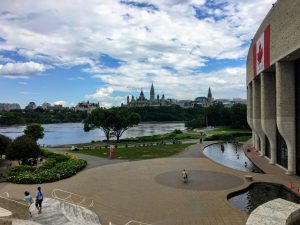Face Facts about Rosacea

If you find yourself vexed by acne-like pimples and bumps on your face that won’t go away, it could be rosacea, and you’re not alone. Rosacea affects more than two million Canadians and is most common in those with fair skin between the ages of 30 and 60. And naturally it’s way harder to cover up now that we’re no longer hiding under our winter hats and scarves.
Rosacea is a chronic skin condition with symptoms that may include bumps, pimples, inflamed lesions and visible red blood vessels. Fun times, right?
Unfortunately, no one knows for sure what causes the condition, but experts have developed a number of theories. We do know that the acne-like bumps are a result of inflamation, which can be caused by many things, including sun damage to connective tissue or irratation of the follicles. Facial blood vessels also seem to dilate too easily, bringing blood to the surface of the skin and making it appear red and flushed. It’s like an extreme version of blushing that doesn’t go away when the awkward moment has passed. There are a variety of triggers that can make the condition flare-up: sun exposure, cold winds, stress, embarrassment, hot beverages, spicy foods and alcohol (especially wine—dang!).
Because rosacea usually affects the nose, chin and forehead areas, and can present with pus-filled bumps, it’s often misdiagnosed as adult acne. The problem here is that you may be using topical or oral medications that aren’t effective. That’s why it’s so important to see your family doctor or dermatologist for a proper assessment. Also, rosacea won’t clear up on its own and, left untreated, it tends to get worse.
The good news is that there are many ways to keep rosacea under control, including several effective prescription options—both topical creams and oral medications—aimed at decreasing inflammation and bumps. If you find topical treatments messy or uncomfortable, the oral treatments may be a good alternative for you.
In the past antibiotics have been prescribed for rosacea, not because bacteria is the root of the problem but because antibiotics also have anti-inflammatory properties that ease inflammation and reduce pimple-like symptoms. The downside of using these drugs for long periods is that they have side effects and can contribute to antibiotic resistance. Luckily, there are now low-dose, once-daily oral options that will not produce antibiotic resistance over time.
Along with managing triggers, these treatments can seriously improve quality of life and help you put your best, most-confident face forward.
For more information on what you can do about rosacea, visit the SavvyMom Guide to Rosacea.














